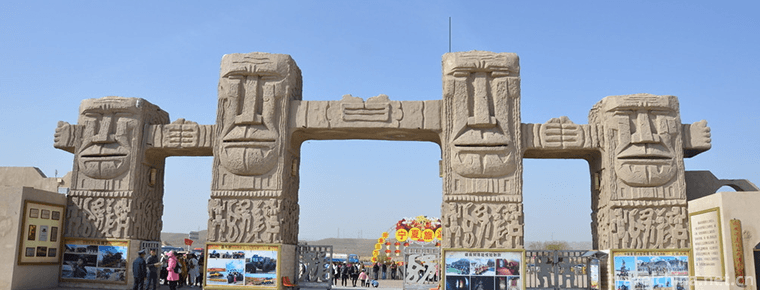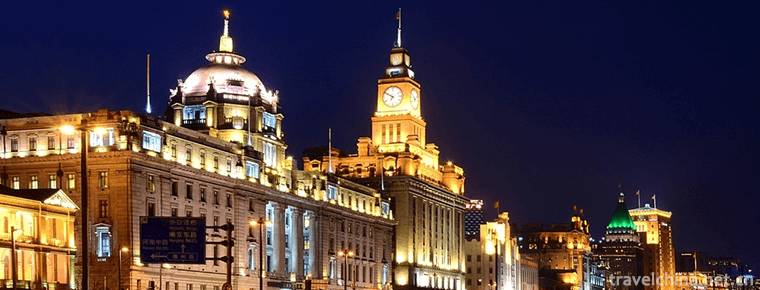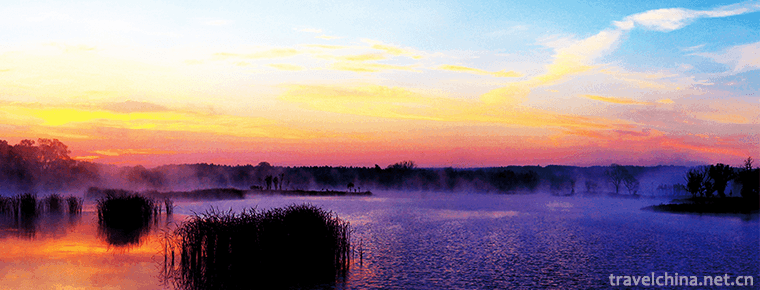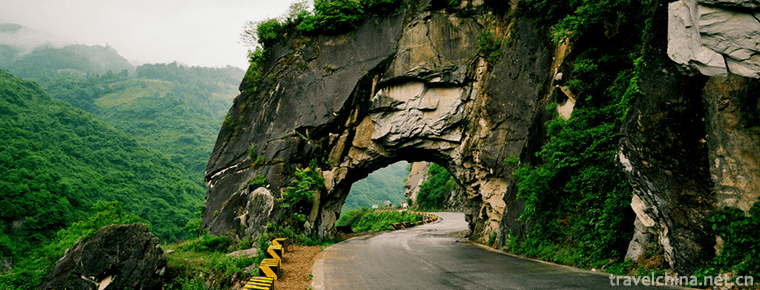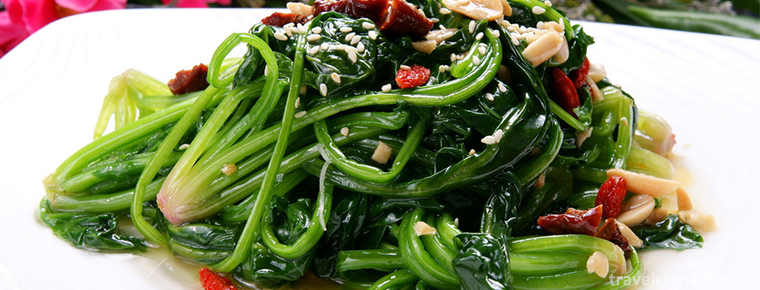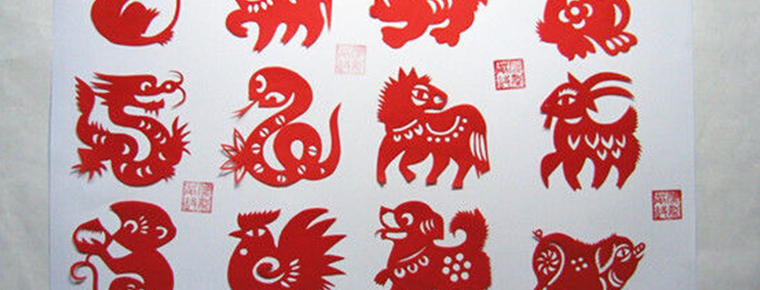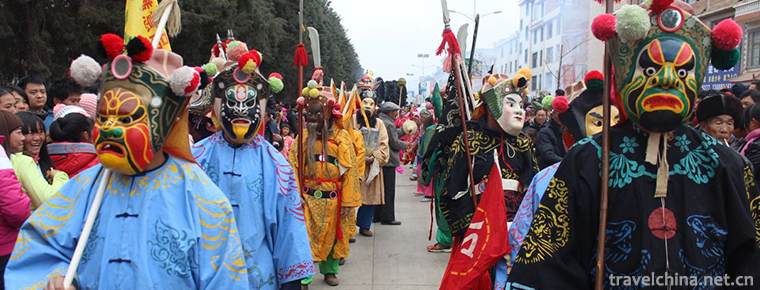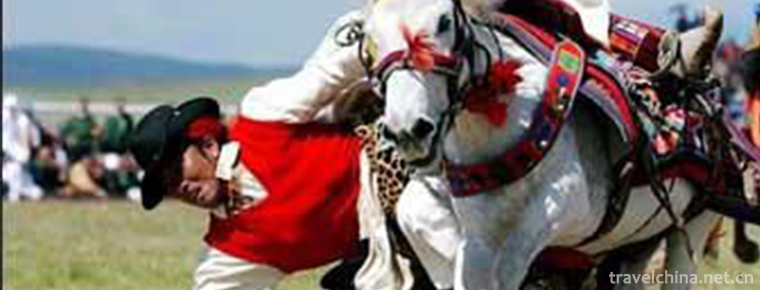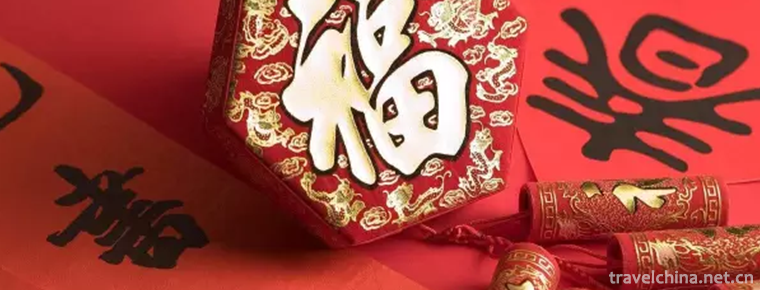Buyi Peoples Changing Dance
Buyi People's Changing Dance
The Bouyei people, who can sing and dance well, have created colorful Bouyei culture. Buyi people like singing and dancing to express their feelings whether they work in the fields or in daily life. One of the most important dances of the Buyi people is the transitional dance.
Transfer dance has a profound historical origin, and the cultural connotation is immeasurable, so let's look at the Bouyei Transfer Dance with a strong national color together with Xiaobian.
Buyi transfer dance, which is called "blare" in Buyi language, is a traditional dance spread in Buyi villages in Ceheng County, Guizhou Province. Every year from the thirteenth to fifteenth day of the first lunar month, men, women and children in Buyi villages gather in costumes to dance in the Village Sun dam farm. From its traditional performance program, it includes four aspects: sacrifice, opening invitation, situational performance and jumping field. There are eight traditional movements in turn dance.
Legend has it that during the reign of Kangxi in the Qing Dynasty, Wang Bao Sai Zhai, the owner of the Dazhai near Chenhengwei, led the villagers to fight back the invaders and become leaders, often bullied the people, so that they could not live. In the mid-winter of Kangxi's forty-eight years, everyone hated a fire that turned the village's owner's home into ashes. My heart was very happy, they were all singing and dancing around the big firearm. Later, after sacrificing Wang Bao Competition, the dance began. In the development of more than 300 years, I do not know when the dance began to spread slowly to the Buyi villages in Ceheng.
Transfer dance is a kind of dance produced by the struggle in Buyi villages under the Tusi system. This kind of dance is warm and unrestrained, relaxed and performing. Buyi people dance around the spring ploughing season to pray to the gods for good luck in order to achieve a smooth year of farming and a bumper harvest. By dancing on the dance floor, Buyi people can learn some of their national history, culture, customs and habits, and receive thanksgiving, respect, unity and other education.
Transfer dance contains many elements of Buyi people's beliefs, social etiquette, life attitudes, moral concepts, educational methods and so on. It has important research value for Buyi people's history and culture, folk customs, ethnic groups, dance and other disciplines. Protecting and inheriting the improved dance is very important for building local Buyi people's national self-esteem, self-confidence and pride, and building a harmonious society. Significance.
Nowadays, the Buyi transfer dance has gradually changed from ritual dance to aesthetic entertainment dance, which is popular among the Buyi people. The Buyi transfer dance has been inherited and protected in 16 primary and secondary schools in the county. It has set the "Shanghai Great World Guinness Record" by organizing the "Wan Wan Buyi transfer dance", which has a great influence in the Buyi area. However, due to the impact of the general environment, we are facing the danger of dying out.

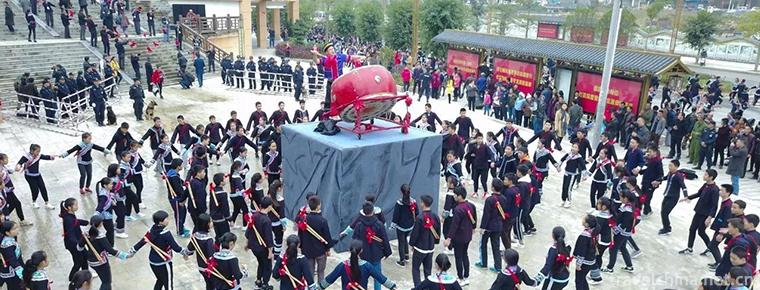
-
Lingwu Shuidonggou Tourist Area
Shuidonggou Ancient Human Culture Site is located in Shuidonggou Village, Linhe Town, Linwu City, Ningxia. It is 30 kilometers south of Lingwu City, 19 kilometers west of Yinchuan City.
Views: 141 Time 2018-12-12 -
Peace Hotel Shanghai
Peace Hotel is a landmark building in Shanghai. Located at No. 20 East Nanjing Road, Huangpu District, Shanghai, it is the first modern building in the history of modern architecture in Shanghai.
Views: 372 Time 2018-12-16 -
jingyuetan national forest park
Jingyuetan, National AAAAA Class Tourist Scenic Spot, National Scenic Spot, National Forest Park, National Civilized Scenic Spot Demonstration Site, National Water Conservancy Scenic Spot, National Na.
Views: 116 Time 2018-12-26 -
Yanxiangdong Ecotourism Area of Hanjiang River
Yanxiangdong Ecotourism Scenic Spot of Hanjiang River is located in Shiquan, covering an area of 80 square kilometers, north of Qinling Mountains and south of Bashan Mountains.
Views: 199 Time 2019-01-13 -
Zhalantun Scenic Area
Zhalantun Scenic Area is located in Hulunbuir City, Inner Mongolia, including Zhalantun City and the Greater Hinggan Mountains in the northwest. The mountains are dense with pine and birch.
Views: 143 Time 2019-01-25 -
Spinach with Eight Delicacies
Babao spinach is a traditional Shandong dish, which belongs to Shandong cuisine. It is rich in color, bright, delicious, light and refreshing. In addition to spinach, Babao spinach is also equipped wi.
Views: 186 Time 2019-03-25 -
Traditional fine arts
China's traditional art heritage is extremely rich and brilliant. Traditional art painting, calligraphy, music, dance, opera, gardens, architecture, sculpture, arts and crafts, traditional cuisine and.
Views: 116 Time 2019-04-19 -
Guan Suo Opera
Guansuo Opera is a kind of local opera, which belongs to the ancient Nuo Opera. It is only found in Xiaotun Village, Yangzong Town, Chengjiang County, Yunnan Province. .
Views: 159 Time 2019-05-01 -
Jockey Club
The horse race held every June in the Tibetan calendar is a grand traditional festival in the northern Tibetan grassland, also known as the "Grassland Festival", which lasts from 5 to 15 day.
Views: 179 Time 2019-06-12 -
Couplet Custom
Couplet is a couplet inscribed on the pillar of the couplet, also refers to the couplet, is a unique form of literature and art in China. The custom of couplets originated from the dual phenomenon of .
Views: 187 Time 2019-07-14 -
Jiang Weicheng
Jiangweicheng site is a representative and important site in the upper reaches of Minjiang River. It is located in the mountain behind the Weishi school in Weizhou Town, Wenchuan County..
Views: 194 Time 2020-11-06 -
Revenue and expenditure of Mianyang
In 2019, Mianyang's general public budget revenue will reach 13.115 billion yuan, an increase of 5.3%; general public budget expenditure will reach 45.334 billion yuan, an increase of 11.1%. The balance of RMB deposits in financial institutions was.
Views: 177 Time 2020-12-14
